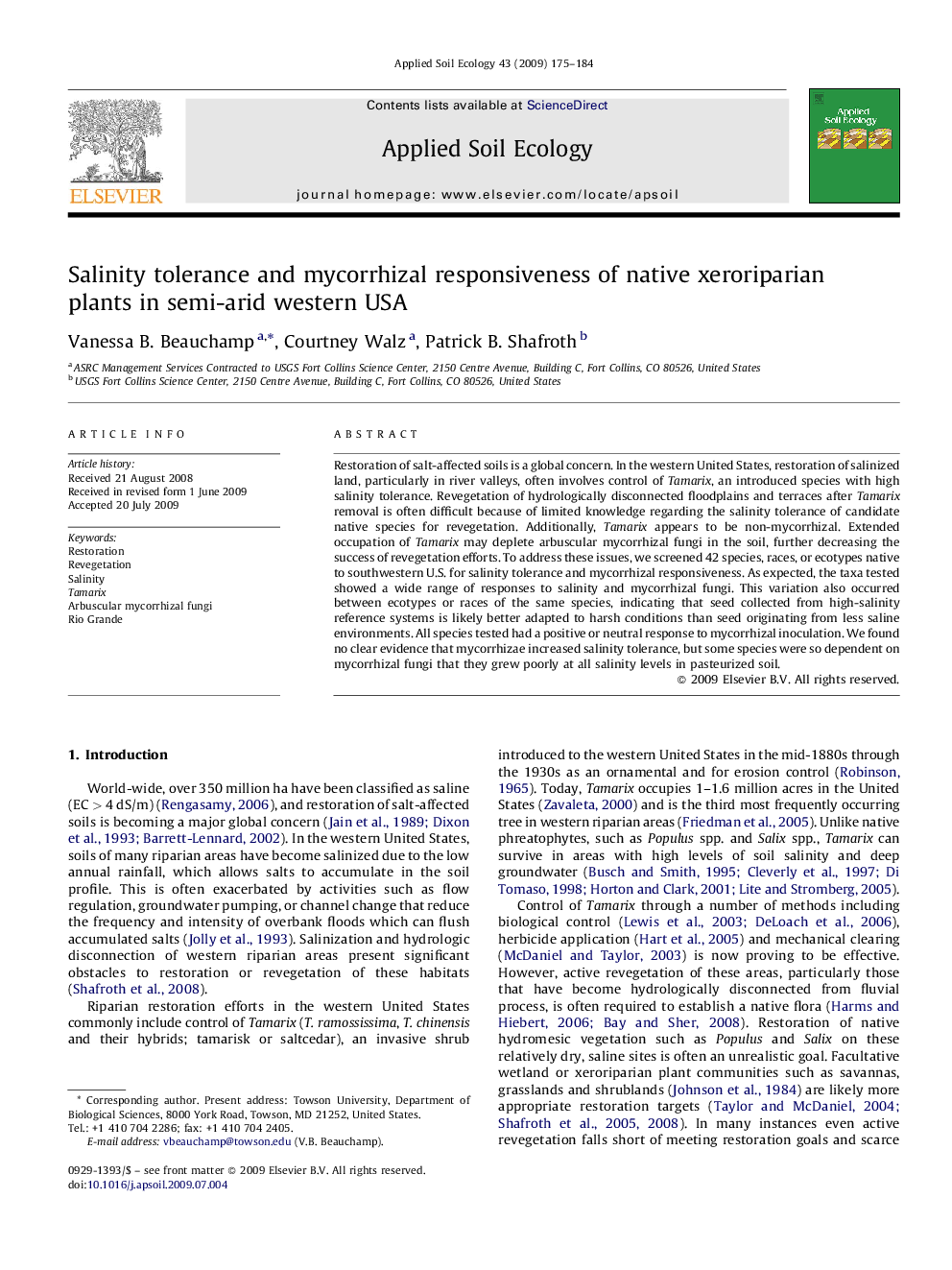| Article ID | Journal | Published Year | Pages | File Type |
|---|---|---|---|---|
| 4383062 | Applied Soil Ecology | 2009 | 10 Pages |
Restoration of salt-affected soils is a global concern. In the western United States, restoration of salinized land, particularly in river valleys, often involves control of Tamarix, an introduced species with high salinity tolerance. Revegetation of hydrologically disconnected floodplains and terraces after Tamarix removal is often difficult because of limited knowledge regarding the salinity tolerance of candidate native species for revegetation. Additionally, Tamarix appears to be non-mycorrhizal. Extended occupation of Tamarix may deplete arbuscular mycorrhizal fungi in the soil, further decreasing the success of revegetation efforts. To address these issues, we screened 42 species, races, or ecotypes native to southwestern U.S. for salinity tolerance and mycorrhizal responsiveness. As expected, the taxa tested showed a wide range of responses to salinity and mycorrhizal fungi. This variation also occurred between ecotypes or races of the same species, indicating that seed collected from high-salinity reference systems is likely better adapted to harsh conditions than seed originating from less saline environments. All species tested had a positive or neutral response to mycorrhizal inoculation. We found no clear evidence that mycorrhizae increased salinity tolerance, but some species were so dependent on mycorrhizal fungi that they grew poorly at all salinity levels in pasteurized soil.
